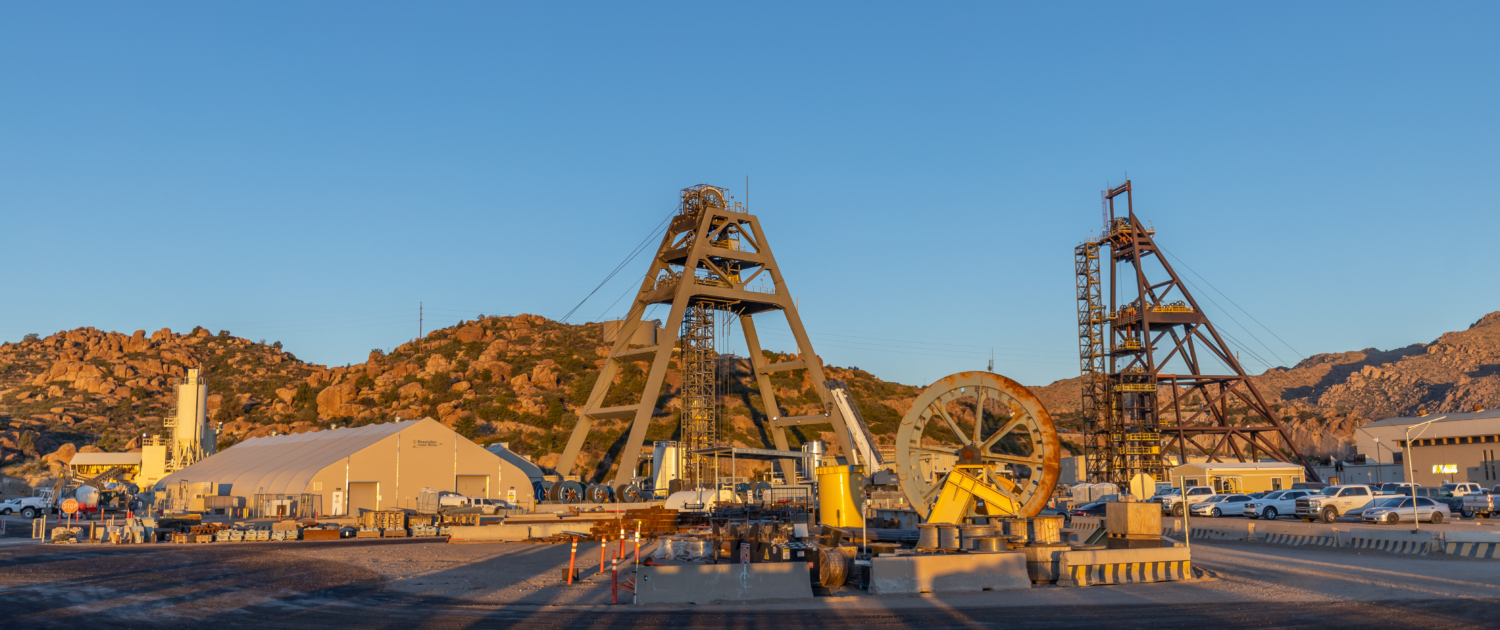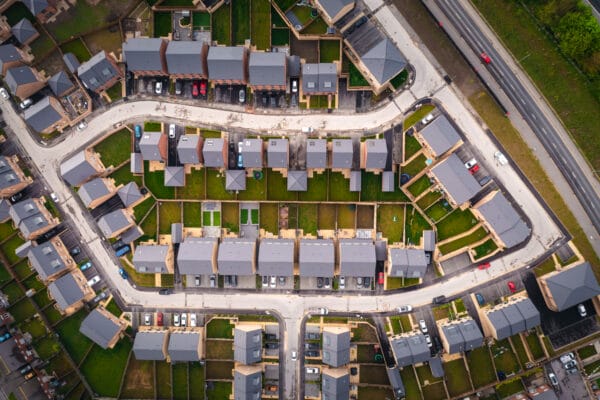(Disclosure: Rose Law Group represents Arizona Sonoran Copper, Resolution Copper, and Ivanhoe Electric.)
By Madelaine Braggs | Rose Law Group Reporter
Arizona’s future as a key player in the global copper market is brighter than ever, as explained during a recent Pinal Partnership panel discussion moderated by Rose Law Group founder and president Jordan Rose. In a state where mining has a storied history, Pinal County proves to be the next chapter of the Southwest’s copper rush.
The discussion brought together leaders from major copper projects across the state, who said several key projects poised to play significant roles in the state’s economy and the global copper supply chain.
Panelists:
- Taylor Melvin, President and CEO, Ivanhoe Electric
- Sophie Dessart, Manager Communications and Public Affairs, Florence Copper
- Ana Vargas, Community Engagement Specialist, Resolution Copper
- Travis Snider, V.P. Sustainability and External Relations, Arizona Sonoran Copper
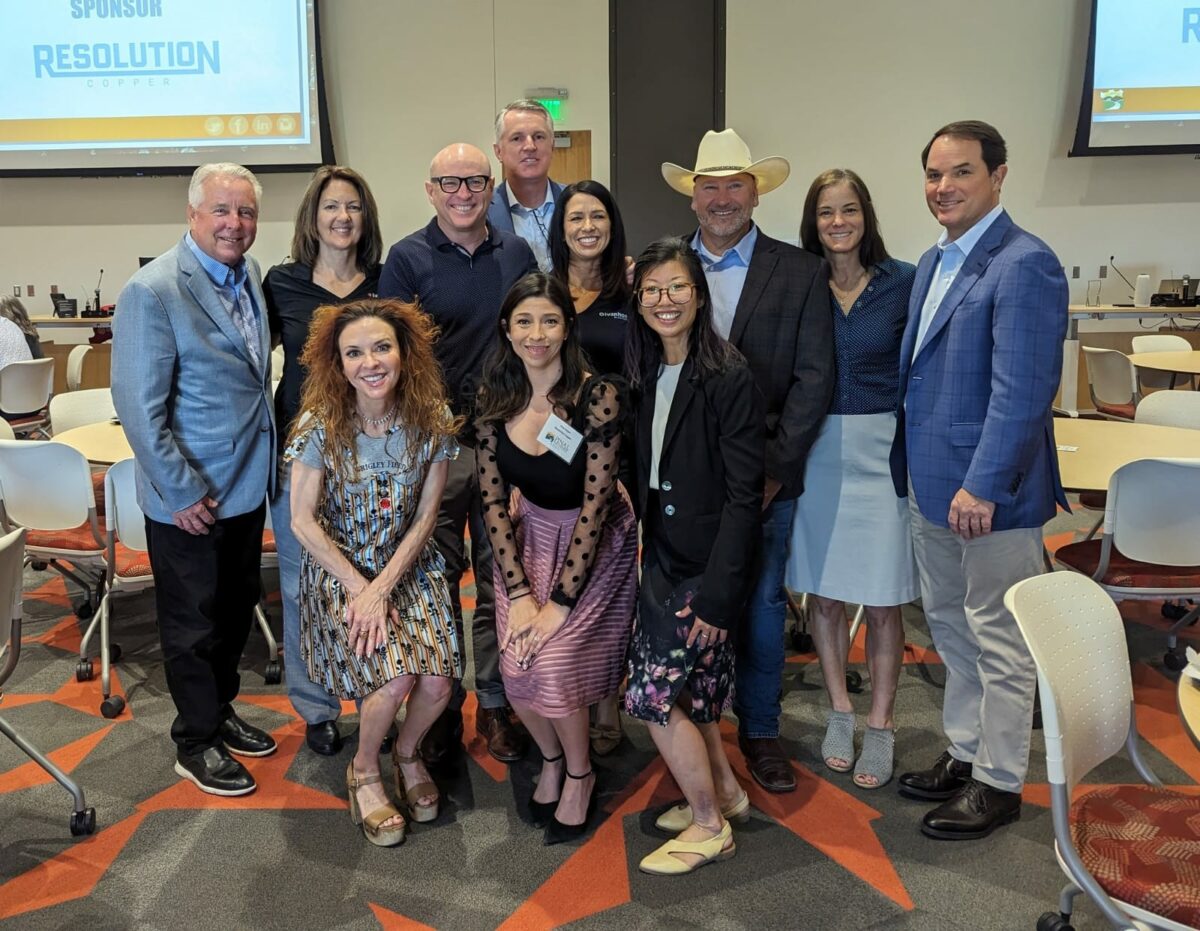
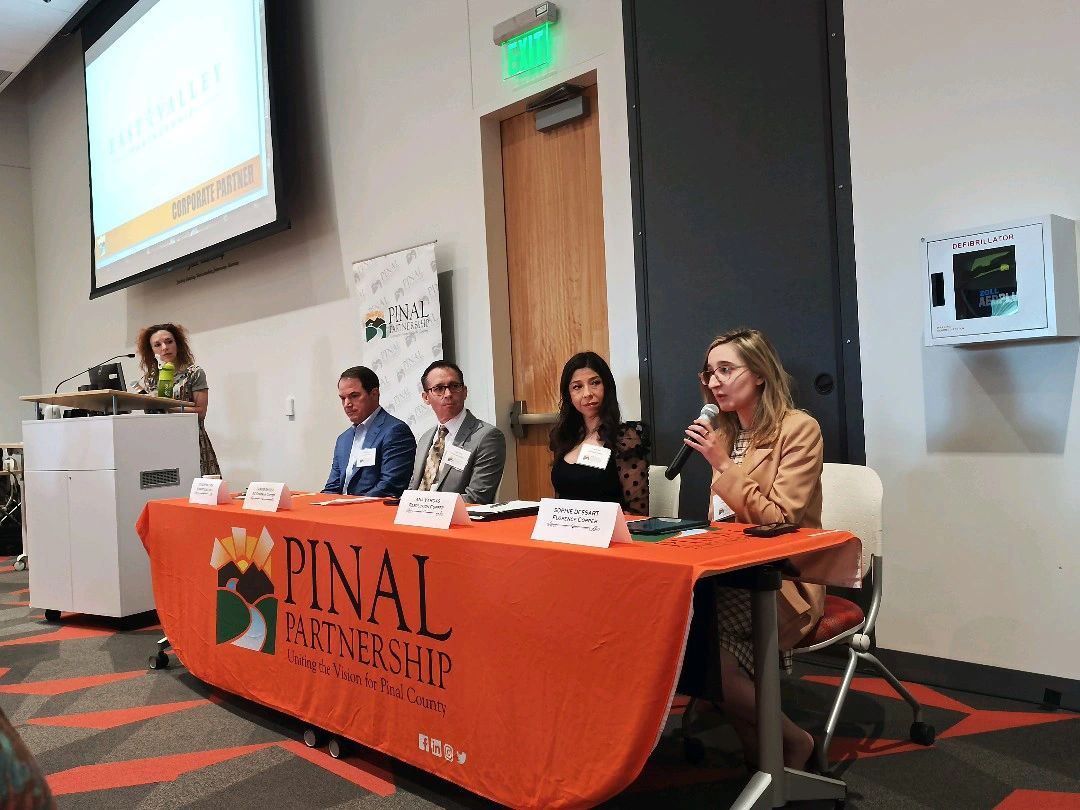
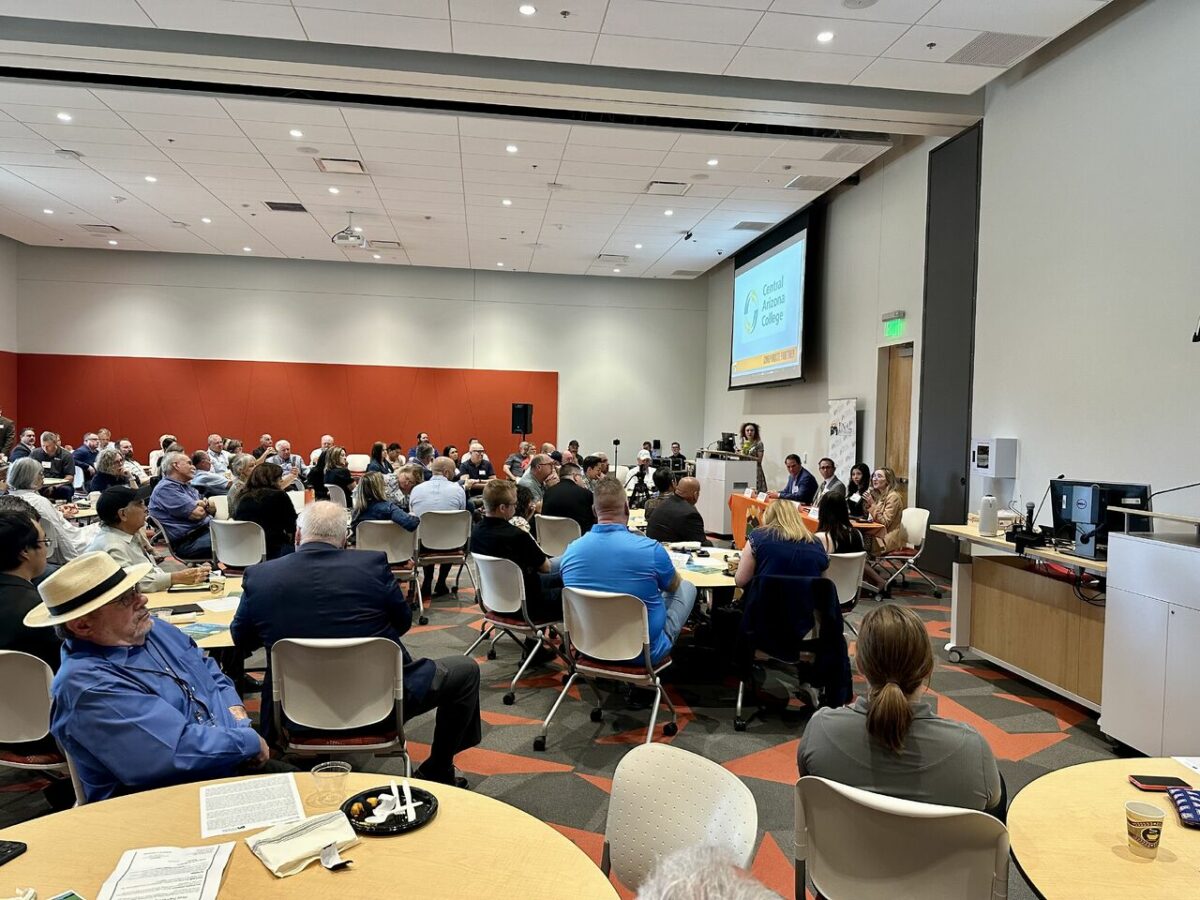





Revitalizing Legacy Mines
Resolution Copper has been a part of Arizona’s landscape for over a century. The mine, located in Superior, Arizona, features two headframes with shafts extending nearly 7,000 feet below the earth’s surface. Ana Vargas detailed its journey, noting the company’s acquisition of old assets initially owned by BHP. “We’ve been maintaining these assets while securing necessary permits,” she said, highlighting the ongoing efforts in Superior, Arizona. The mine’s complex permitting phase has spanned over 15 years.
Florence Copper offers a stark contrast with its innovative approach to copper extraction. “Our operation doesn’t resemble a traditional mine; instead, we use in-situ copper recovery technology,” explained Sophie Dessart. Located in Florence, the project has already produced over one million pounds of copper and is expanding its facilities for commercial production. Dessart projected an annual output of 85 million pounds of copper over the next 22 years, supporting approximately 820 jobs in Arizona.
Exploration and Expansion
Arizona Sonoran Copper is currently in the exploration phase near Casa Grande. Travis Snider discussed the project’s recent pre-feasibility study and anticipated operational timeline. “We aim to begin operations by late 2026 or early 2027,” he stated. The Cactus Mine project is expected to produce about 120 million pounds of copper annually for 20 years, generating significant employment opportunities in the region.
Ivanhoe Electric is advancing the Santa Cruz Copper Project, also near Casa Grande. “Santa Cruz is the largest undeveloped copper resource in the United States entirely on private land,” said Taylor Melvin. The project plans to yield 180 million pounds of copper annually over a 20-year mine life, with over 700 employees.
Copper Production and Workforce Impact
By creating jobs, supporting local businesses, and investing in infrastructure, mining operations can foster sustainable growth and improve living standards in these areas. Pinal mining estimates billions in economic impact for decades. Collectively, these projects underscore the positive community impact and economic opportunity in copper production:
- Ivanhoe Electric: 180 million pounds annually, employing 700 people.
- Arizona Sonoran Copper: 120 million pounds annually, employing 455 to 500 people.
- Resolution Copper: With the largest ore deposit in the United States, it’d have the ability to produce 25% of the U.S. copper demand and 1,500 to 3,000 workers.
- Florence Copper: 85 million pounds annually, supporting 820 jobs.
To put it in perspective, Arizona is 5th largest copper producer in the world, historically producing over 10% percent of the world’s copper industry. According to Arizona State Mine Inspector Paul D. Marsh, Arizona produces 74% of the nation’s copper. Out of 10 copper mines operating in the state right now, 4 of them were present at the panel. “With just these four sites we’d become a worldwide copper exporter,” said Marsh.
“These are big chunky numbers, so we need to work together to bring on more copper to become more self-sufficient, and one of the things we’re trying to do is to support U.S. supply chain independence and security by bringing on responsible new sources of copper ,” said Melvin.
SEE ALSO:
- Pinal Partnership: These 3 mines are expected to have major impacts on Pinal’s economy
- Company head says CG copper mine has decades of potential
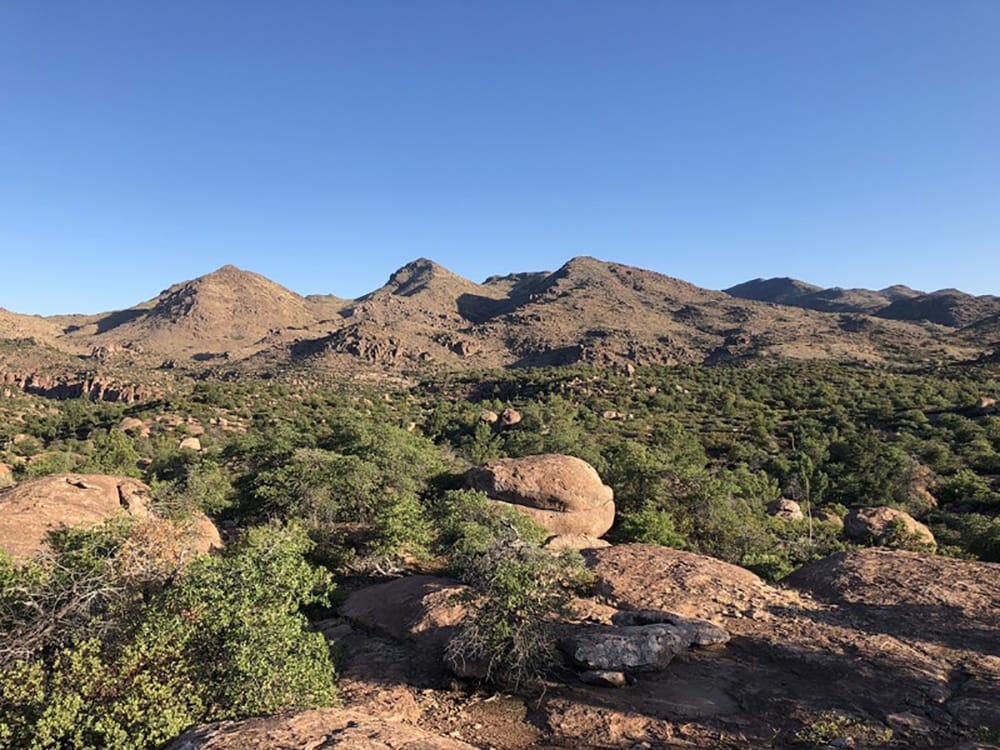
Industry Dynamics and Collaboration
Despite their competition, the panelists emphasized a collaborative spirit. “We all produce the same product, but it’s not a zero-sum game,” said Melvin. “High tides raise all ships,” added Snider, reflecting the tight-knit nature of the mining community.
Environmental Considerations and Sustainability Efforts
As stewards for responsible production, the panelists were unanimous in their commitment to sustainability. They said modern technology has created more sustainable operations by enabling efficient resource extraction with minimal ecological disruption and reducing the carbon footprint through advanced techniques and renewable energy integration.
- Ivanhoe Electric plans to utilize up to 70% renewable energy. “We aim for an operation with the lowest carbon footprint per pound of copper produced,” said Melvin.
- Arizona Sonoran Copper focuses on improving the environmental baseline of its site. “We’re using renewable energy and reducing groundwater use,” Snider emphasized.
- Resolution Copper collaborates with local and tribal communities. “We’re replanting Emory Oaks and ensuring water resources for future generations,” noted Vargas.
- Florence Copper boasts a process with significant environmental benefits. “We use 65% less energy and 78% less fresh water compared to traditional mining,” Dessart highlighted.
Community Engagement and Economic Contributions
Copper mining plays a defining role Arizona’s rich history. Now, over 100 years later, these mining companies say they continue their dedication to the economic development in their local communities. Each company deeply values engaging and developing their local communities:
- Florence Copper: Dessart shared their extensive community support initiatives, including scholarships and charitable grants. “We’ve given over $121,000 in grants and $91,000 in scholarships,” she stated.
- Resolution Copper: Vargas emphasized local employment and educational partnerships. “80% of our workforce is local, and we invest heavily in local schools and hospitals,” she said. Following protest to mining in Oak Flat, the company reduced the land exchange area requested rom 3,325 acres to 2,422 acres, excluding Gaan Canyon, Apache Leap and portions of Oak Flat. After completion of the land exchange, public access to areas within Oak Flat, including the campground and recreational trails and climbing will be maintained.
- Arizona Sonoran Copper: Snider highlighted their economic impact, projecting $15 billion in economic output and $1.2 billion in taxes over the life of the mine. That’s equivalent of Casa Grande having the Super Bowl every year.
- Ivanhoe Electric: Melvin discussed the job creation and modern design of their operation. “We will employ 750 people during operations, with thousands more during construction,” he noted.
Permitting Challenges and Regulatory Environment
Permitting remains a significant hurdle for mining projects:
- Resolution Copper: Ana Vargas described the extensive permitting process, involving local, state, and federal permits. “We’ve been in permitting for over 15 years, but it ensures we’re meeting all regulatory standards,” she said.
- Florence Copper: Sophie Dessart shared their success in securing federal and state permits, enabling expansion into commercial operations. “We are one of very few projects in the U.S. with all major permits in place,” she noted.
- Arizona Sonoran Copper: Travis Snider discussed their state and local permits, with expectations to receive final permits by the end of the year. “We’re fortunate to operate in a supportive regulatory environment,” he said.
- Ivanhoe Electric: Taylor Melvin highlighted the benefits and challenges of U.S. regulations. “While it’s more expensive, U.S. regulations ensure we meet high environmental and safety standards,” he stated.
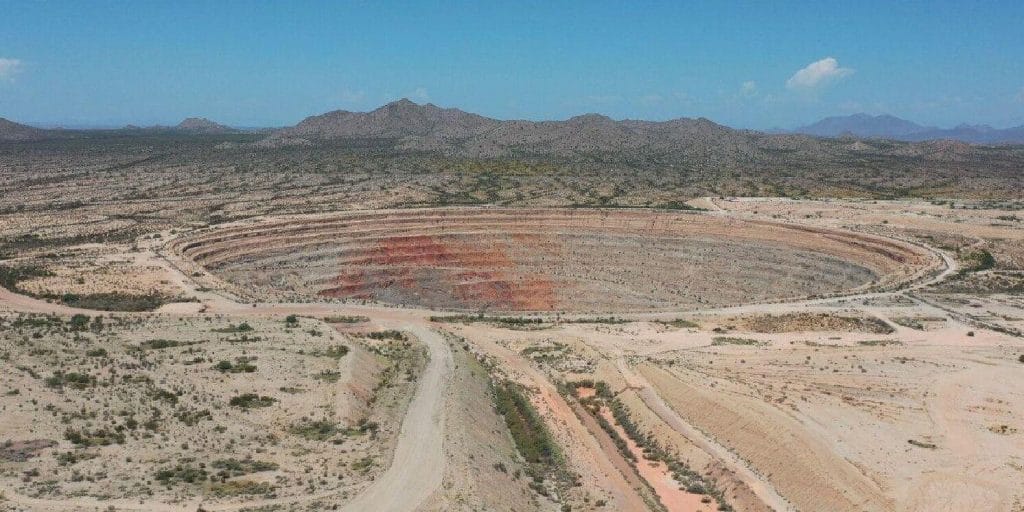
Global Demand and Market Dynamics
The global demand for copper is driving these projects forward:
- Production Goals: Taylor Melvin said, “To maintain 3% GDP growth, we need to produce as much copper in the next 25 years as we have in the history of civilization,” he emphasized.
- Market Competition: Despite stringent U.S. regulations, the panelists agreed on the attractiveness of the U.S. for mining investments due to its stable rule of law and resource wealth. “North American mining can be done economically, despite higher costs,” Melvin noted.
Future Outlook
Arizona’s copper sector is poised for significant growth, driven by innovative projects, sustainable practices, and strong community engagement. As these projects advance, they will play a crucial role in meeting the world’s growing demand for copper while supporting local economies and communities. This growth is essential not only for Arizona’s economic development, but also for maintaining the state’s position as a global competitor.

